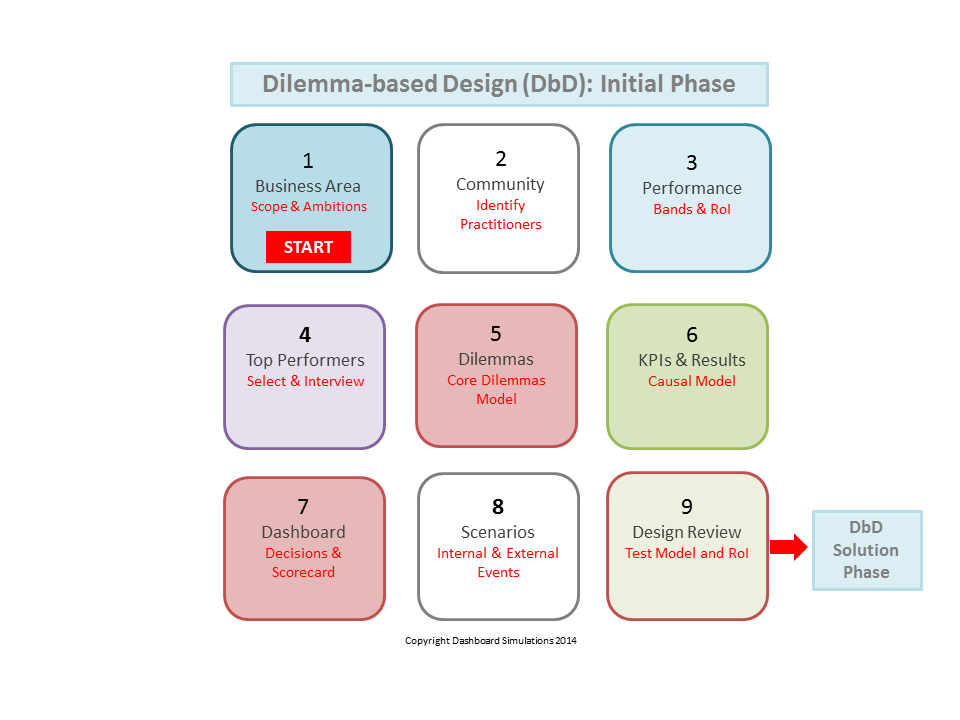 The designer of serious business games has two huge challenges. Firstly which particular aspects of an often broad business area should they focus on to achieve the learning objectives.
The designer of serious business games has two huge challenges. Firstly which particular aspects of an often broad business area should they focus on to achieve the learning objectives.
Secondly how to achieve “requisite complexity” in the treatment of the selected area to incorporate the required level of complexity to achieve the objectives but not a jot more as this will confuse and complicate everything.Dilemma-based Design (DbD) is an approach a designer can employ to address both these challenges.
The diagram above summarises the main steps in the initial phase of Dilemma-based Design. DbD starts by identifying a business area of interest and its boundaries and agreeing with the business sponsor some improvement ambitions as targets to focus the efforts. We then need to identify the community of practitioners who are operating in this area and categorise them into different roles if such exist.
Next we want to try and describe in quantitative terms what top class, good and average performance looks like and to estimate the percentage of the practitioner community in each of these bands. This is a key step as it forms the basis of the return on investment argument. This allows us to identify the top performers (subject matter experts) and to interview a subset of them to establish the core dilemmas in their roles and how they resolve them to achieve such excellent results.
We then need to reduce the potentially long list of candidate dilemmas down to a handful we can work with – a necessary and sufficient set. Next we need to create a cause and effect model of the key dilemma decisions and how they impact KPIs which in turn drive the business results and create a single screen dashboard mock-up which shows what the players would actually see in the game.
The next step is to explore different scenarios of internal and external events which would bring the key dilemmas centre stage into the game at appropriate points.
Finally we package all this together and review it with the sponsor and the subject matter experts who have worked with us to see how it holds together on paper and to review the ambitions and improvement goals/return on investment to see if they make sense in terms of both value and achievability. This leaves us in a strong position to move forward into the
Dilemma-based Design Solution Phase with confidence that we are addressing a high value target with a compelling approach which is feasible and likely to successfully deliver the results we need.
Further Reading on Dilemma-Based Design:
Ten Dilemmas: A short video intro to dilemma-based design for Business Simulation Games
Consistently resolving 5 or 6 Meta Dilemmas marks top leaders
High performance leadership/decisions: business game research findings